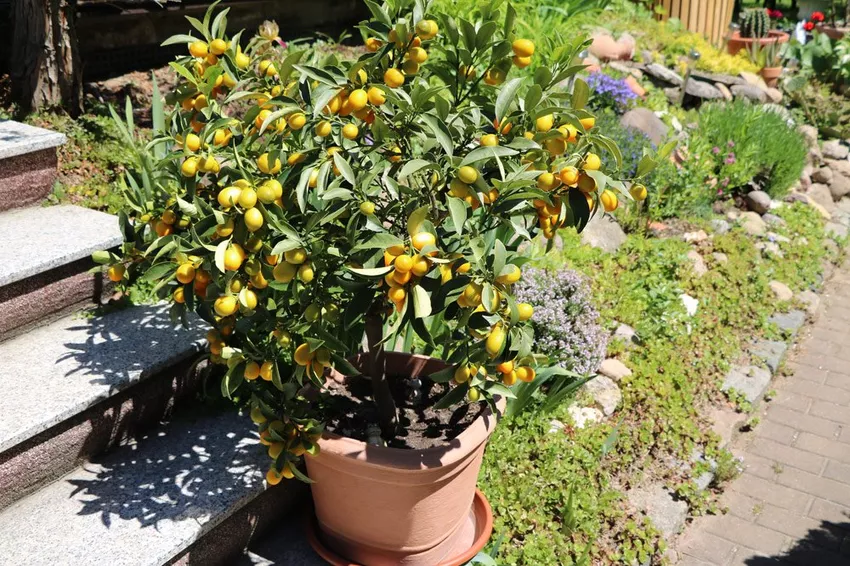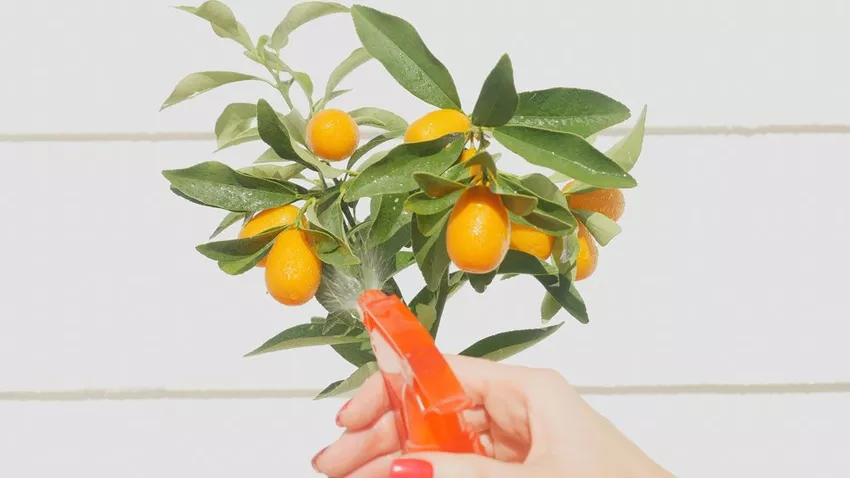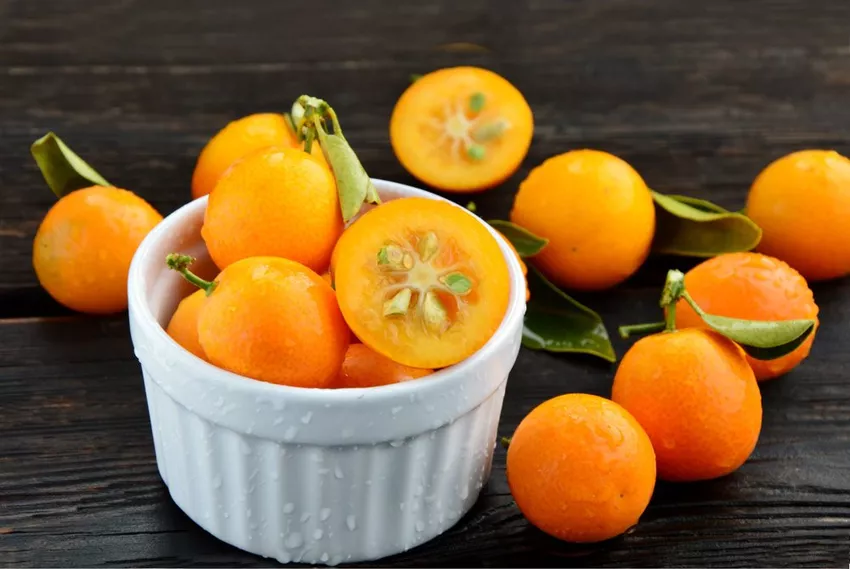Kumquats are very popular because of their sweet and sour taste. So why not cultivate them in your own garden?

The kumquat (Fortunella) is becoming increasingly popular as an ornamental plant. On the one hand, this is due to its white flowers, which not only impress visually, but also with their fragrant scent. In addition, the fruits have a sweet and sour taste that not only gourmets appreciate.
Origin and Use of Kumquat
The kumquat belongs to the rue family and comes from Asia. It was discovered by a gardener and researcher named Robert Fortune, who also brought it to Europe. Within its homeland, it is still used as a crop. Within our latitudes, however, she is not suitable for outdoor cultivation. Under the right conditions, however, it easily develops fruit within the four walls of your home, which you can nibble straight off the tree.
Short fact sheet about the kumquat
| Kumquat (Fortunella) | |
|---|---|
| Family: | Rutaceae |
| other names: | Dwarf orange, dwarf lemon, mini tangerine, tangerine plant |
| Growth: | up to three meters |
| Growth form: | shrub and slightly treelike, dense and spherical |
| Location: | sun-drenched living rooms, balcony, terrace, conservatory |
| Floor: | not particularly demanding, saline soils should be avoided |
| Special Features: | • Avoid drafts at all costs. • In summer she can move into the garden. • Her fruits are edible. |
| Hiberation: | The plant only tolerates light frost to a limited extent and therefore needs a place to overwinter. |
Kumquat Types
In general, there are different types of kumquat, which all share very similar care. A basic distinction is made between the following:
- Fortunella japonica:
It is also known as marumi kumquat. At herShoots are numerous, very sharp thorns. The fruits are up to four centimeters in diameter.
- Fortunella japonica "Variegata":
It has a similar appearance to the plant of the genus japonica, but forms variants with white spots instead of the normal leaf color.
- Fortunella margarita:
It is also known as the oval kumquat and is much easier to care for indoors thanks to its lack of thorns. The fruits develop a dark orange color and, as the name suggests, are oval in shape. They are three centimeters long and two centimeters wide.
- Fortunella obovata:
This variant (also known as Changshou kumquat) forms spherical fruits that have a very firm skin and are up to three centimeters diameter.
- Fortunella hindsii:
The Hong Kong kumquat remains relatively small, as do its fruits. They are also called mini kumquat.
- Fortunella polyandra:
If you prefer a kumquat with a very thin skin, this is the right choice. Their round fruits are up to four and a half centimeters in diameter. Its other name is "Malay Kumquat".
- Fortunella crassifolia:
The oblong fruits of the Meiwa kumquat are yellow-orange and about four centimeters long. They are extremely sweet and the texture of the flesh is reminiscent of mango fruits.
The right location for the kumquat
 If the kumquat is kept at home, it is best to put it in a place that is as bright as possible and gets a lot of sun. In summer, the plant can also move into the garden. The space occupied by the kumquat is difficult. Because it grows very wide and needs space to develop freely.
If the kumquat is kept at home, it is best to put it in a place that is as bright as possible and gets a lot of sun. In summer, the plant can also move into the garden. The space occupied by the kumquat is difficult. Because it grows very wide and needs space to develop freely.
Nevertheless, the location should be sheltered so that it doesn't get any draughts.
The kumquat needs this soil
To guarantee the most abundant flowering possible, the soil of the kumquat should be rich in nutrients. Although it is not very demanding, the soil should be based on compost if possible.
The ideal pH value is therefore in the acidic range between 5.5 and 6.5. If no substrate is purchased, an optimal mixture can also be made from sand, clay and loam. Under no circumstances should it be too calcareous or alkaline.
One can be avoidedcalcareous soil with the help of foliage or a peat substitute. Water permeability is also important.
Repotting Kumquat
The plant is usually purchased already in a container that is appropriate for its needs. Therefore, it should only be repotted when absolutely necessary. Here are some tips to keep in mind:
- Repotting is only necessary when the soil is no longer loose or appears fresh.
- The ideal time for repotting is in spring. This should be done by the end of July at the latest, as the plant will then sprout again.
- Of course, the new pot should have drainage holes in the bottom and be larger than the old one.
A word of advice: If the kumquat is placed in the garden in summer, it should not be planted in the ground but left in its pot. Since it is susceptible to frost anyway, the plant and its pot are simply placed outside.
Pouring Kumquat
 During the vegetation phase, the kumquat requires more water. This is especially the case in the warmer seasons. This means that even if the top layer of soil has not yet dried, it can already be watered again.
During the vegetation phase, the kumquat requires more water. This is especially the case in the warmer seasons. This means that even if the top layer of soil has not yet dried, it can already be watered again.
Regular should be watered regularly from spring to early autumn. It is important to ensure that there is no waterlogging. Like all other plants, the kumquat does not like wet roots. The irrigation water should be able to drain well in the pot. It is therefore best to pour away standing water.
The kumquat also prefers high humidity. The easiest way to achieve this is to regularly spray the plant with water. Alternatively, you can also place a bowl of water indoors.
The kumquat loves lime-free water. In order to be able to give her this regularly, it is best to use a filter system with which the water is filtered before watering.
Fertilize Kumquat
In order for the kumquat to produce plenty of flowers and fruits, fertilization is essential. First and foremost, the nutrient-rich soil is essential. In addition, a fertilizer for citrus plants is recommended, which the plant ideally receives every two weeks.
During the flowering phase, a complete fertilizer that contains a lot of potassium can be used. If the plant has faded, this is omitted again.
Should she be circumcised regularly?
Theoretically, a kumquat can do without regular pruning. Who, however, a richer bloom and more fruitwants to grow, prune the kumquat in the spring. Please note the following:
- Longer shoots are shortened by up to two thirds.
- Further branches are only cut back.
- The aim of the cut is to form a round and bushy growth habit.
- Malformations, weak or too thin knots are completely removed.
Regular pruning also promotes plant he alth. One more thing: If the growth is too strong, the plant can be cut back in autumn.
Can kumquat be propagated?
 It doesn't take much effort to propagate a kumquat. Sowing is possible all year round. It is only important to ensure that the seeds that come from the fruit are sown two days after removal.
It doesn't take much effort to propagate a kumquat. Sowing is possible all year round. It is only important to ensure that the seeds that come from the fruit are sown two days after removal.
The seeds are placed in a pot filled with potting soil. The seeds should sit at a depth of about two centimeters. They are then slightly moistened. The necessary humidity is achieved by putting a plastic bag over the pot.
As a location, choose a spot that is sunny, but not too sunny. Ideal growth is possible within a propagation box that is additionally heated. The perfect temperature here is 21 degrees Celsius.
Watering behavior should be appropriate. This means that the soil is never completely dry, but overwatering is also not recommended.
When the seedlings are about ten centimeters high, they can be pricked out and transplanted into individual pots.
Proper overwintering of the kumquat
At best, the kumquat should be placed in a place where there is a lot of light and a temperature between five and 18 degrees for the winter. It tolerates a light frost, but has a negative effect on the fruit setting.
The ideal location during the winter period is in the conservatory or in a heated greenhouse. Then the fruits continue to grow until January. The plant is also watered less during the winter. However, the soil should always be slightly damp.
Harms and pests on the kumquat
Since the kumquat is a plant that is not usually native to our latitudes, it is all the more susceptible to pests. It is also possible that one or the other disease will appear in her. The kumquat is particularly susceptiblefor:
- scale insects
- Red Spiders
- spider mites
All of the above pests tend to appear when the humidity is too low or the plant is too dry. The infestation can be recognized by the fine cobwebs that cavort on the leaves. In the event of an infestation, action must be taken as quickly as possible, otherwise the entire plant may die.
It is remarkable that an infestation occurs especially during the winter time, since mistakes are often made during care.
A common disease that occurs in the kumquat is what is known as gum flow. This disease is also known as gummosis or gummosis. It can be recognized by a viscous liquid that is yellow-orange in color, sticky in nature, and settles on the branches and bark of the tree.
Unfortunately it is unclear where she comes from. The fact is, however, that the disease usually only affects trees that are weakened. If you discover this disease in your kumquat, your immune system should be strengthened. Furthermore, every affected part of the tree is removed.